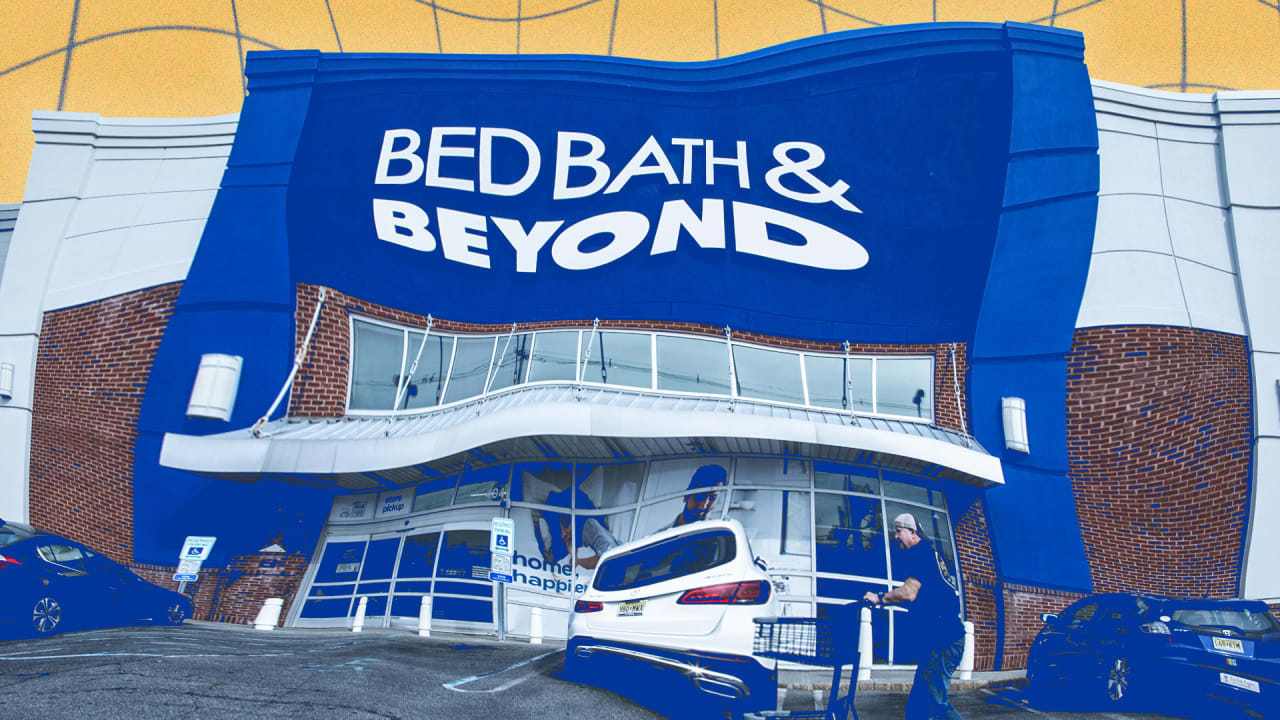[ad_1]

After more than 50 years in business, Bed Bath & Beyond (BB&B) is packing it in. The company, whose finances have been fraught for years now, has filed for Chapter 11 bankruptcy and will shutter all 360 of its remaining brick-and-mortar stores.
But its loyal shoppers—who, for years, basked in BB&B’s light as a nesting haven and worshipped at its altar of coupon clipping—will have one last parting gift: a bash of store-liquidating sales with massive markdowns.
Everything must go.
The sales start as early as this Wednesday. (That same day, BB&B’s signature 20% coupons, which customers stockpiled in earnest as they were renowned for never expiring, will be null and void.) All close-out sales will be final. Items purchased before the sales start on Wednesday can be returned or exchanged only up until May 24.
The company is still seeking a buyer for some or all of its assets, but in the absence of one, it will cease operations this summer, by June 30. It estimates a net income of $718 million from the close-out sales, countering $1.8 billion in debt obligations, according to court documents.
News of BB&B’s setting sail into its great beyond has sent waves of grief crashing across the internet. For a big-box home-goods store, it had an unlikely cult following.
Founded in 1971, Bed Bath & Beyond was dubbed a “category killer” in its heyday—alongside fellow erstwhile specialty-store giants Toys “R” Us and Circuit City—slaying its retail rivals to top the market for air fryers, quilts, and curtain rods. At one time, it had over 1,100 stores nationwide. It became an American pop culture institution, such that when the notorious Boston mobster Whitey Bulger was arrested, and his home raided, newspapers reported that his kitchen drawer stashed one of the retailer’s 20% off coupons.
Then, early in the COVID-19 pandemic, when at-home investors from Reddit’s subreddit r/WallStreetBets infamously rallied around a crop of failing stocks—briefly skyrocketing them to absurd financial heights—Bed Bath & Beyond was one of them, among other beloved-but-money-losing bets like GameStop and AMC.
But the bootstrapped boost was far from enough to save the sinking ship. BB&B’s troubles had already begun a decade earlier, when it was slow to tailor itself for the digital shopping age. When it attempted a turnaround strategy that scaled back on coupons—led by a CEO who eventually spent $1 billion buying back the company’s own stock—it tanked, with executives admitting it was a “big mistake” to misjudge consumers’ valuing of those vouchers.
When the pandemic hit, BB&B was forced to temporarily shutter stores, while competitors that were deemed “essential” retailers, like Walmart, stayed open. Then came mass layoffs, real estate cuts, and another turnaround attempt—a new CEO, a “back to basics” strategy—that ultimately fell short, amid plunging sales numbers and losses that were widening by double-digit percentages.
A nail in the coffin came with a disappointing 2022 holiday season. Since then, BB&B has been teetering on the brink of bankruptcy, drying up all of its remaining lifelines from creditors. Most recently, a deal with Hudson Bay Capital Management, which could have given BB&B over $1 billion, was terminated when the company failed to meet stock-price minimums.
Now, as the floundering retailer waits to meet its fate, some shoppers are preparing to send it off with a wave of nostalgia—and maybe, one last bargain buy.
“Millions of customers have trusted us through the most important milestones in their lives—from going to college to getting married, settling into a new home to having a baby,” Bed Bath & Beyond CEO Sue Grove said in a statement. But in that cycle of life, naturally, death comes.
[ad_2]
Source link

